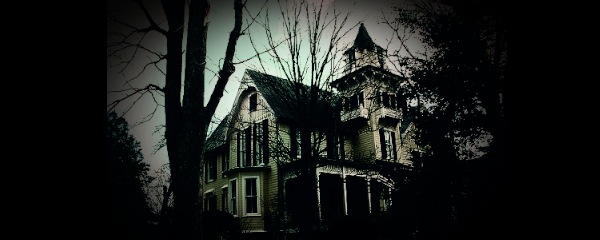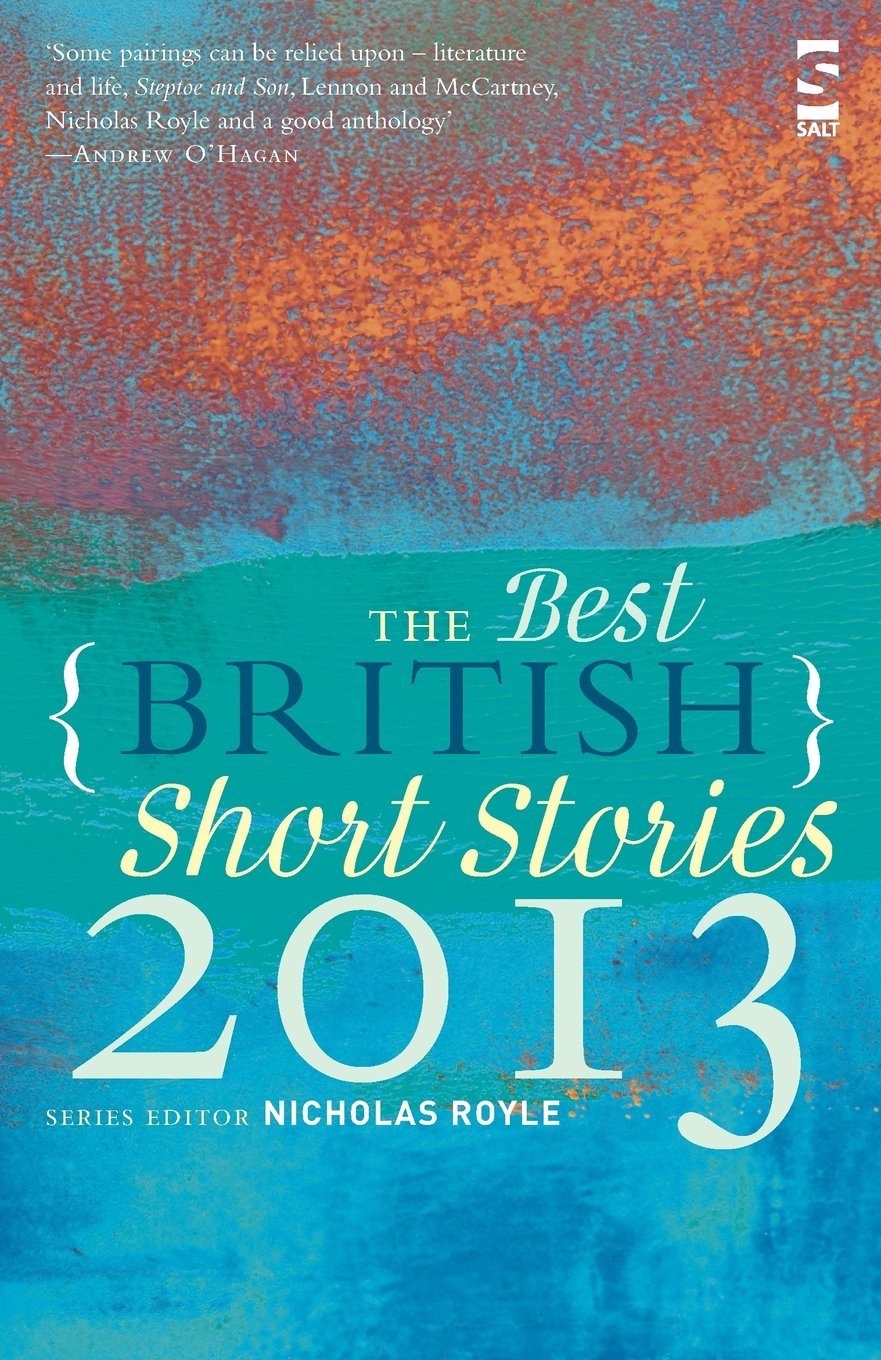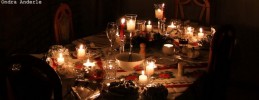
photo by Monica
by Alex Ruczaj
Opening The Best British Short Stories 2013 is like entering a house. A great, gothic house, where disquieting, mysterious and shocking things happen. A house that is bursting with suppressed emotions, vengeful acts and a chilling atmosphere.
Perhaps this is because, in the very first story, by Alison Moore, we find ourselves on the doorstep with Rachel, a woman who is returning to her childhood home after leaving her own home hastily. As we enter, Rachel ‘sees that she is treading something into the house’. And from there, the ominous atmosphere doesn’t improve. Once inside, the aroma of her father’s carbolic soap, represents not cleanliness, but something more sinister: ‘it is like the smell of the slaughterhouse itself.’
In Adam Marek’s story ‘Stormchasers’, we go further into the house, to the family living room. Here, we are faced with the impossibility of a storm that appears to have occurred inside the home:
In the middle of it all, sitting on the floor with her arms round her legs, and her forehead on her knees, is mummy. Her knuckles are bloody.
Jakey moves towards her. I hold him back with my hand.
“Don’t. There’s glass,” I say. “You okay, mummy? Did you see it, the tornado? When it came through?”
No answer. No movement.
But it’s clear from Marek’s subtle narrative that the mother’s bloody knuckles have more to do with the broken table and upturned toys than an interior tornado.
For M J Hyland’s story ‘Even Pretty Eyes Commit Crimes’, we sit in a hot kitchen as a son tries to hide his wife’s desertion from his over-bearing father. This is an exquisitely restrained story. Essentially, it is a father and son’s conversation at the kitchen table, the to and fro of every day dysfunction. But the tension is kept high, because, as in most families, there are secrets and lies, and appearances that need to be kept up.
When my father came back into the kitchen, he smelt of Brut and this meant he’d been in the bathroom cupboards and he’d probably seen that none of her stuff was there.
And so, I had no choice, but to sit at the table and wait for him to say what he’d come to say.
Hyland skillfully drip feeds us the background we need about this family and, as the father’s questions and comments become more intrusive, she quite literally turns up the heat. The son begins to ‘burn up’ and there’s ‘no ice’ to have with their water. The effect is powerful; it had me longing for an open window.
In the beautifully crafted ‘Curtains’ by Charles Lambert, it is the Study we’re not supposed to enter, but when we do, we discover the macabre sight of a table full of ‘grey-white bones’. Plenty of strange things are happening down in the cellar too, in Regi Claire’s ‘The Tasting’, where skulls gleam in the candlelight and tattooed men ply you with wine.
 However, the entire collection isn’t limited to the four walls of a house. Thankfully, in Ellis Sharp’s ‘The Writer’ we get to step outside, though we do remain in a quasi-gothic setting:
However, the entire collection isn’t limited to the four walls of a house. Thankfully, in Ellis Sharp’s ‘The Writer’ we get to step outside, though we do remain in a quasi-gothic setting:
None of the ravens seemed to be looking for worms, or doing anything but stand amid the dying grass, motionless, lost in meditation. The blackness of their plumage seemed lurid and their normal size was magnified fifty per cent […] On the skyline a few trees huddled together for company.
The story grips us with its strangeness, its rich drug-fuelled description and with its odd central character, Doodles, whose world view and lexicon for description is delightfully eccentric, dark and funny: In the first paragraph he is transfixed by a poster of Mick Jagger on the tube: ‘…his recognition of those eyes and shrunken cheekbones was, metre by metre, confirmed. He felt, like a mouse in the Jagger villa.’
In the last part of the story, Sharp emulates the great John Barth, as he goes back over the prose and makes fun of the narrator’s vocabulary and storytelling techniques: ‘The ravens were there earlier, but they were not ravens but rooks. Trees have no emotions and do not crowd together for company.’ Sharp slices up the events of the ‘real’ journey and glues them back together to form a more compelling narrative. It is a suitably surreal, and also instructive ending.
In fact, this collection has a lot to teach aspiring writers. As Sharp teaches us about narrative arc and timing, Jackie Kay shows us the importance of specifics for building character, in her story ‘Mrs Vadnie Marlene Sevlon’.
When people asked her what her husband did she would tell them he was an electrician. She would picture him, vividly combining the features of the electrician with a man she once sat next to on the bus to the Lake District. She made a kind of composite husband, took the hair from one and gave it to the other so that he wasn’t balding just receding, took two inches of height from one and gave it to her husband, made his skin a rich dark brown.
Kay creates an authentic character so skilfully that, although we know this man is an imaginary husband of an imaginary character, we too feel his loss at the end of the story. This is Kay at her best, depicting lonely eccentrics that do strange things that any one of us might do if we were in a similar circumstance.
It’s not only the strength and skill of the writing, the mastery of craft, that make this a writer’s collection. It’s also because there are wonderful echoes of all that has gone before. Hemingway’s influence is clear in Alex Preston’s story ‘Swimmer in the Desert’, depicting a soldier’s battle with isolation and his longing to swim (maybe there’s a little of Cheever there too). The story with the most obvious influence, though, is ‘Doctors’ by Anneliese Mackintosh. She successfully uses the second person imperative without it being irritating. No mean feat. She has a sparky, funny voice that manages to find its own pitch, yet it’s still strongly reminiscent of the great Lorrie Moore. Mackintosh has created a very modern and very British (Scottish) version of Moore’s ‘How to Become a Writer’.
Make a cup of tea.
Watch The Apprentice on iPlayer.
Wonder what the term ‘original research’ means […]
Then spend two and a half hours Googling for correlations between visually impaired Chimpanzees in central Africa and blind characters in the early novels of Charles Dickens. Huh, well how about that? No luck.
Mackintosh manages to not only be as funny and clever as Moore, but she also delivers the gut-punching sadness too: ‘A few minutes later, see your first dead body. Touch it. Talk to it. Say goodbye to it.’
The writers in this anthology know the short story intimately. They know how to get the most from the genre – their work is infused and enhanced by the great writers that they admire – and this gives the collection real substance. I would support Boyd Tonkin, from the Independent, and his view that the editor, Nicholas Royale, has excellent taste, ensuring ‘little explosions of weirdness or transcendence often erupt amid much well-observed everyday life.’
The tales within The Best British Short Stories 2013 have inspired me to re-read other authors, and to write more too. I’m excited to try a horror story like Shearman’s ‘Bedtime Stories for Yasmin’, or a Carveresque/Hyland story structured around a tense conversation in an everyday setting. Perhaps I’ll set it in some unexplored room of an imposing gothic mansion, although, after this, I may only be left with the garden shed.

